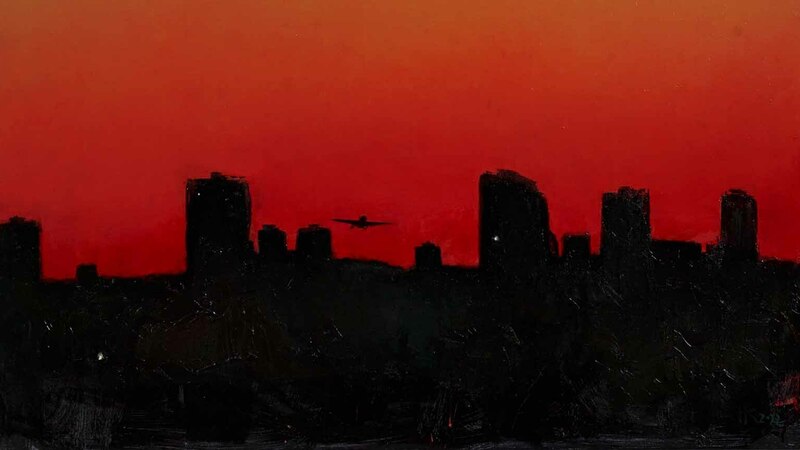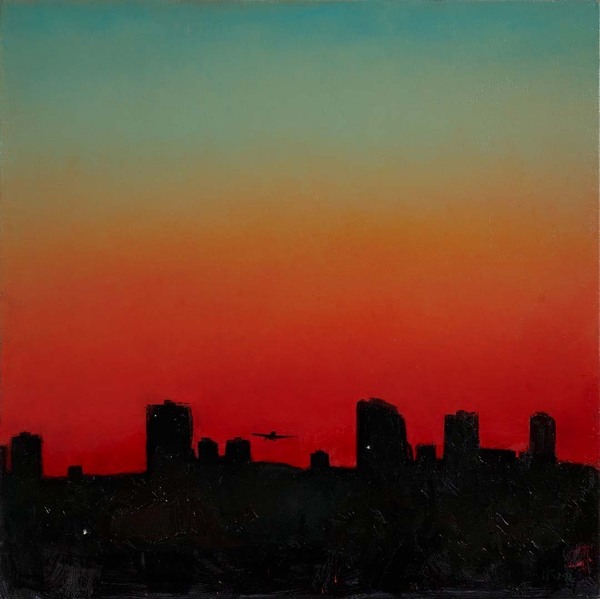
The monsters have human faces
Anna-Maria Osadchuk
vertical pupils or fur like animals
even worse – they have the same ones we do
their ribs resonate with the hum of deep blood wells
it’s just as red
and fast
only cold
forever still in the veins
because no cell in their body
will tremble
doing atrocitites,
common man has committed a crime
although, not to fear
they are, turns out, wretched
chained into vicious hatred
boiling in sightless jealousy
they never had a soul
and they’ll never truly know
what does being human mean
a living free human, like from the Bard’s ballad
only monsters’ jaw is clacking a takt:
no way to wash human blood
off of sinful hands
and just
unforgettable taste on the tongue
of the jet-black soil
sunflower stem
that has sprung through the skull of the horrid ghoul
the monsters do have human faces
their bodies are made of soft flesh
that’s why we don’t need shots of silver
to shove them into hell’s gates
у монстрів людські обличчя
у них немає ікл чи клешень
хутра тварин чи вертикальних зіниць
ба гірше – у них такі самі як в нас,
у грудях їхніх чути відгомін глибокої крові криниць
такої ж червоної
та швидкої
лиш холодної,
застиглою у венах навік
бо не здригнеться й клітина
їхнього тіла
вчинивши безчестя,
скоїв злочин простий чоловік
та не варто боятися
вони ж є нещасні насправді
заковані в ревній ненависті
аж киплять у сліпій заздрості
ніколи в них душі не було,
вони й не знатимуть до кінця
що значить людиною бути
людиною живою, вільною, як з балади Співця
лиш щелепа чудовиськ наклацує такт:
не змити крови людської
з грішних рук ніяк
й лишень
у роті чути незабутній смак
землі пречорної
соняшниковий злак,
що проросте із черепа кошмарних вурдалак
у монстрів є людські обличчя
з м’якої плоті їх тіла,
тому й не треба нам тих куль сріблистих
аби запхати їх до пекла грат.
Analysis by Bohdana Yakobchuk

Soil and land are closely linked with Ukraine’s national identity, reflected in the importance of agriculture and the rural way of life in the country’s past and present. In contemporary Ukrainian poetry, land becomes part of the body of the nation. Russian warfare has had a devastating impact on Ukrainian territories, creating shelled villages and minefields on agricultural land, and committing eco-terrorism that leaves the land either chemically contaminated or unlivable (for example, the land flooded as a result of the destruction of the Kakhovka dam). This lived reality of the war on the land inspires an imaginative parallel between the wounded bodies of people and the wounded bodies of soil.
Anna-Maria Osadchuk, a student at Ukrainian Catholic University, is one example of a number of contemporary Ukrainian poets who, in their work, conceptualize their nation as a personified character. In this poetry, Ukraine has its own values and clearly draws a distinction in how it behaves towards its children and its enemies. The nation becomes, at the same time, an anthropomorphized young woman and the actual land. Thus, in contemporary poetry Ukraine is not just a motherland, but a Mother/land.
Just as the conceptualization of Ukraine has a duality, the maternal nature of Ukraine is also dualistic. Ukraine as a Mother/land is a nurturing mother that houses and feeds its nation, but it is also a violent mother, one that aggressively protects and does not hesitate to use violence against the enemy. This conception of motherland goes back to ancient mythologies: Osadchuk cites the mythological cycle of life and death as part of the earthly imagery in her poetry — according to myths in various world traditions, humans were created from soil or clay and, after death, become part of the earth once again. The Mother/land is a place of birth and a place of burial, although, there is a difference in how burial happens for those the Mother/land nurtures and those it fights against.
The role of the soil is openly acknowledged in Ukrainian burial traditions. The most common Ukrainian equivalent to “rest in peace” is “земля пухом” which roughly translates to “may the earth be soft.” To its Ukrainian children, Mother/land is a resting place, a place of peace and commemoration. In her poem “як кровоспинне, щось його спиняє…” (“like a blood clot, something…”), Halyna Kruk (whose other work is discussed by Jake Miller) describes Ukrainian earth as a place of burial. The poem was written in October of 2014, less than a year after the Russian annexation of Crimea and the start of the war in Donbas. Because of the fighting, and for the first time since Ukraine gained independence in 1991, the population included disabled soldiers and individuals suffering from military post-traumatic stress disorder and war trauma. Kruk’s poem is about a soldier who lost his leg and how both he and Ukrainian society reconcile with his new reality. She creates a vision of a tragedy:
…in those miraculous fields,
so saturate, no foot can fall
without grasping its own absence…
From these lines, we get an impression of a battle aftermath, a place full of blood and death. Kruk is matter-of-fact about this morbid reality: “his unit’s all scattered throughout the rye fields…” The field she describes is a mass grave, but it is one that serves as a place of remembrance: “he begins to gather them up when he closes his eyes . . .” In this instance, the soil is an after-death medium of existence, a liminal space where all the victims of war lie in peace to be commemorated by those who survive and come after. Mother/land becomes a cradle for her dead children, she carries them to ensure they are remembered.
Mother/land deals with its enemies very differently in more recent Ukrainian poetry, the work that has been produced since Russia launched its full-scale invasion of Ukraine on February 24, 2022. As a literal body of land, poets have cast Ukraine’s landscape as a witching place; soil places a curse on its enemies. The relationship between Ukrainian soil and its enemies in contemporary poetry is best described by lyrics from “Колискова для ворога/A lullaby for the enemy” by Ukrainian singer and songwriter СТАСІК/Stasik (translated from Ukrainian): “You wanted this land//So now mix with it//You will be my land now.”
In contemporary poetry written about the war in Ukraine, soil curses Russian soldiers, it engulfs and recycles them into fertiliser. This is a clear motif in Osadchuk’s poem “the monsters have human faces” (“у монстрів людські обличчя”). This piece was written on April 4, 2022, days after Ukrainian troops liberated Bucha, Hostomel, and other cities near Ukraine’s capital Kyiv, and uncovered the war crimes committed by the Russian army in those occupied cities. This series of horrors, which caught global attention, has become known as the Bucha massacre. Osadchuk’s poem challenges the mythologization of Russian soldiers as monsters, suggesting instead that they are human but with monstrous souls.
In the poem, the human nature of the enemy means they can be defeated. The poem does not mention actual death, just:
…unforgettable taste on the tongue
of the jet-black soil
sunflower stem
that has sprung through the skull of the horrid ghoul…
In Osadchuk’s poem, Ukraine’s soil has consumed the enemies and has used their bodies to fertilize new growth, new flowers. The image of the sunflower—Ukraine’s national flower—in full bloom has characterized many popular and artistic responses to the war. Osadchuk’s relation of the flower to battlefield death and regrowth is inspired by a famous video from Kherson oblast that surfaced on the first day of the full-scale invasion in which a local woman offers a Russian soldier to “...at least put these seeds in your pocket, so sunflowers grow when you lie here.”
As promised by the curse in Osadchuk’s poem, land dissolves the essence of the enemy as well as their body. It is a reverse cenotaph, a body without a tombstone. For its enemies, Mother/land is a place of neglect. It ensures that the enemy is forgotten by the living, by making them an unidentifiable, anonymous dead prisoner for eternity. Mother/land is a place of national power being exercised — it recycles the enemies into the soil that feeds the flowers of national identity.
Research by: Bohdana Yakobchuk and Jake Miller
Poet: Anna-Maria Osadchuk
Translator: Bohdana Yakobchuk, with Sofiia Dobko (editor)
Theme: Bodies of Earth
Theme Introduction Next Exhibit
"The monsters have human faces" by Anna-Maria Osadchuk reproduced with permission.
Header image: “Bayraktar” by Kateryna Kosianenko, oil on canvas, 2022. Image used with permission from Kateryna Kosianenko.